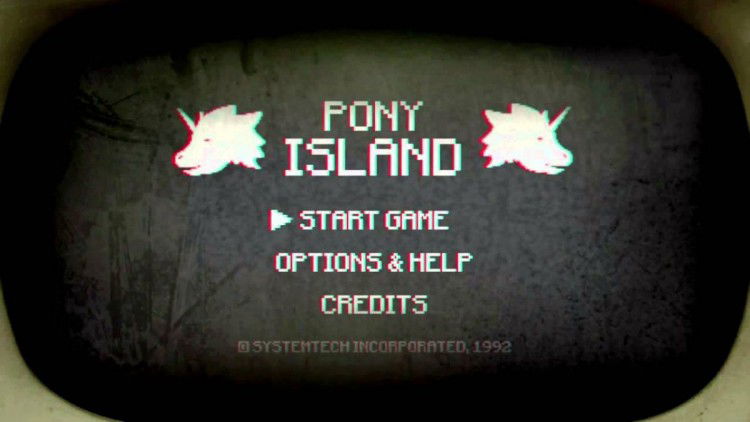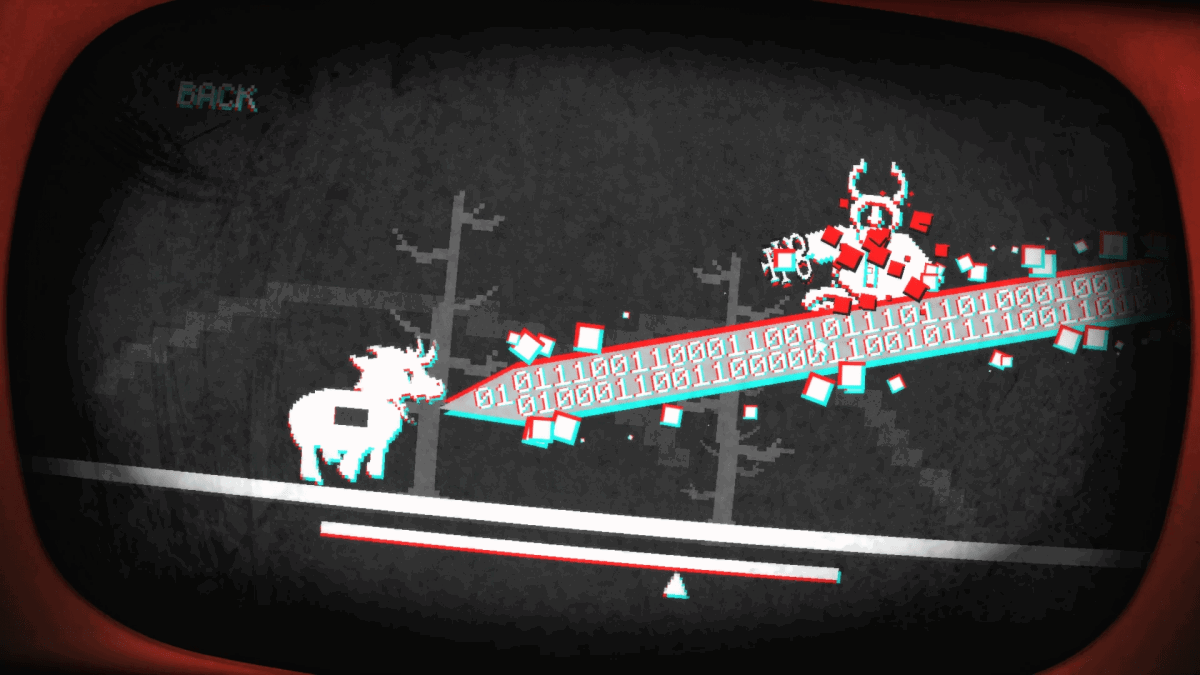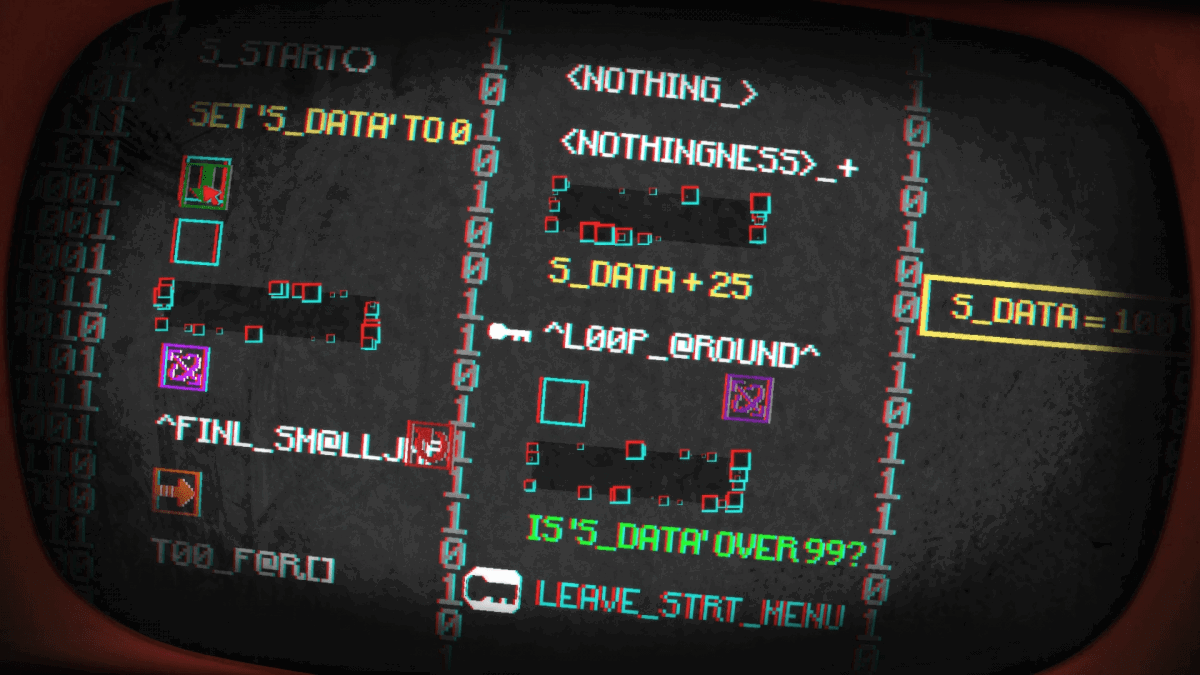It really is quite impressive that games like Five Nights at Freddy’s and Undertale have become as big as they are, nowadays rehashes of the same hackneyed design concepts are plentiful, and experimental design is often turned from (I mean, why reinvent the wheel when you can make a survival RPG with crafting?). Despite this, these titles have used freakishly simple gameplay to create completely unique experiences and it’s not too hard to see why: world building. A well-built and defined world enhances everything the game has to offer; nowhere is that more evident than with the explosive experimental indie titles. The stage is set for Pony Island: a game that’s not actually about ponies.
Game Name: Pony Island
Platform(s): PC (Steam)
Publisher(s): Daniel Mullins Games
Developer(s): Daniel Mullins Games
Release Date: 1/4/2016
Price: $4.99
In Pony Island, you play the role of a lost soul stuck playing on an arcade cabinet devised by the devil himself. How can you spare yourself an eternity play testing a repetitive runner called Pony Island? Simple; you break the game. Find glitches, restructure code, hack features, and exploit bugs to break the game and use the time it takes Satan to fix the issues you create to find a way to escape.
Gameplay takes three basic forms throughout: Pony Island, text editors, and desktop: each offering a unique experience and significance to the story at hand.
Pony Island (henceforth to be referred to as PI to separate it from the actual, real life game) is an extremely simple game in which you jump over hurdles until you reach the end of the level. Satan is quite proud of this effort; problem is, he’s a terrible developer. He can tell when the game is too easy, but then compensates with extremely unfair mechanics such as unavoidable enemies and unclearable jumps. How do you work around this and not spend eternity playing a broken game? Break his code.
In certain areas of the game, it is possible to edit the game itself to unlock abilities that make the previously impossible challenges beatable at the cost of royally pissing Satan off.
Text Editors / Development Environments
Satan has a very fragile ego, and as such, he will punish you for being too good at his overly simple game with impossible obstacles. Fortunately enough, he is not only a poor developer at the conceptual level, but his coding is terrible as well.
In especially poorly coded areas of the game, small bundles of red and blue pixels appear. These spots open portals to the text editor and allow you to fiddle with Satan’s code to cheat the game. These events manifest themselves as puzzles with blank spots for commands that tell the game which operations to execute. Typically, the code gives a value and then takes it away (or the value is just insufficient), so it’s your job to make the operation go through the entire command line by bypassing the negative value; in laymen’s terms, the puzzle in the image starts with “Set ‘S_DATA’ to 0” and in order to pass, ‘S_DATA’ must be over 99, so you have to make the S_DATA + 25 command happen four times before it reaches the last command. Sounds complicated, but basically all you’re doing is dragging and dropping arrows that tell the little key where to go.
These puzzles are actually pretty fun and though there are several of them, much like PI, seeing them doesn’t become too much of a drag as the story keeps you coming back for more. They also give a satisfying feeling of sticking it to the man, which is doubly cool because “the man” is Lucifer himself.
A decent portion of Pony Island is spent in desktops and menus; in fact, the game proper won’t even start until you delve into the splash screen’s menu and fix it through the in-game settings. Desktop play is generally like this: you cannot progress at the moment and/or you have something you’re digging for before Satan serves you up his latest build of PI, in that time, you must dig through files and mess with the explorer to find whatever it may be that you need to keep the story going. This gameplay feels much more like a point-and-click adventure and compliments the story greatly, tying the entire experience together through strategic pacing.
Overall Thoughts
On the technical side, Pony Island does not disappoint. The pixel graphics, though simple and somewhat played out in the indie scene, adds to both the ominous feel of the game and the notion that Satan is a Busch League indie dev. The music serves the exact same purpose, adding to the tone of the game while being simple enough that it could have been created by someone of lesser experience or bought on the cheap. Little touches like the hud breaking apart and the pony laser being made of ones and zeros due to being hacked in take this concept even further, making it eerie in its demonic implication as well as acting as a comedic exaggeration of poor implementation.
At the core, this dichotomy in addition to the progressing story make Pony Island an ingenious effort, offering multiple levels of humor while creating a tense and stressful environment. On top of that, the game offers collectibles, alternate endings, and secrets that explain the story at hand and give context to the character you play as.
In total, the game lasts about an hour and a half (or even just an hour if you know what to do), but every second is enjoyable, creating a unique experience and showing what experimental game design can be.
Pony Island
Satan is a brony
I said it once, I’ll say it again: Pony Island is simply ingenious. Much like FNAF and Undertale before it, it uses surprisingly simple gameplay to push a greater experience rich in story, suspense, and intrigue. It’s a bit early to call out “must play” games for 2016, but I have little doubt that Pony Island is worth every penny.
Pros:
- Intriguing concept and story
- Varied gameplay
- Simple, yet deep
- High replay value for completionists
Cons:
- Quite short
- Repetitive and somewhat boring if you’re not interested in story or lack a sense of immersion
-
Gameplay - 9/109/10
-
Graphics - 10/1010/10
-
Sound - 9/109/10
-
Value - 10/1010/10





